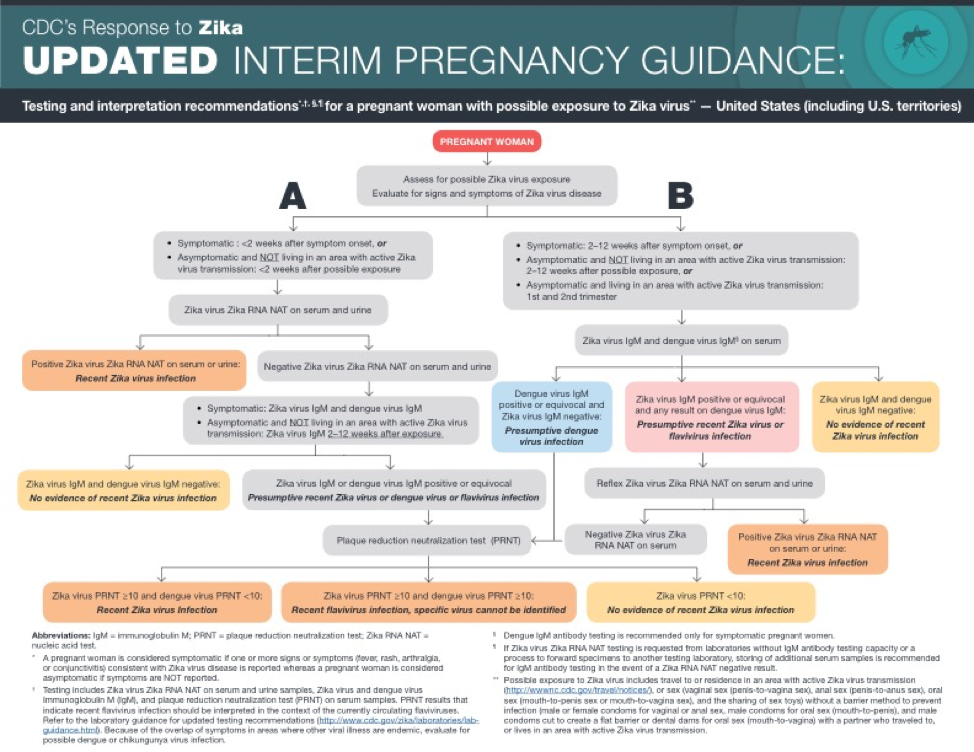Courtney Marchese
Assistant Professor of Interactive Media + Design
School of Communications
Quinnipiac University
: In graphic design, models are material prototypes that help synthesize research into testable forms. Through experimentation and testing, many rounds of revisions are made to culminate in a visual that can effectively speak to its audience. In an age of infinite information, data visualization, particularly in global health, is a critical arena for accurate and useful visual modeling. For example, the Center for Disease Control (CDC) has Zika Pregnancy Guidelines in the form of a flowchart (Figure A). While it is certainly a necessary model to share with the general public, it is often cumbersome and difficult to understand. Riddled with professional medical terminology, footnotes, and companion charts, the model fails to serve as an accessible form to the information most needed by its audience. In examining the CDC’s guidelines, it is unclear whether they intend to communicate with health professionals or women potentially infected with zika. Rather than using a “one size fits all” approach to the chart, I propose modeling different forms that the information can take as viewed through the lens of different people in different environments and scenarios. Each prototype will take on a persona and emphasize the most important information to a specific audience explaining what to do before, during, and after exposure to zika virus. As such, each persona also serves as a model of sorts to represent an audience segment. By prototyping multiple forms, my goal is to make critical health information engaging and clear to those who need it most. Additionally, these prototypes can serve as a model for other issues within public health communication.

This research was presented at the Design Incubation Colloquium 4.0: SUNY New Paltz on September 9, 2017.